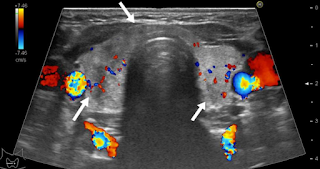Breakthrough SARS-CoV-2 infection precipitating a stroke in a child
A six-and-a-half-year-old fully vaccinated and previously healthy Asian boy presented to the accident and emergency department with 5-day history of high-grade fever associated with non-projectile vomiting, loose stools, abdominal pain, generalized rashes and conjunctivitis without discharge, reduced oral intake and urine frequency. However, he had no history of cough, joint or limb pain, sore throat or rhinorrhea. He was treated for a suspected bacterial infection with co-amoxiclav and paracetamol then cefixime, ibuprofen and desloratadine. As the illness progressed , he became extremely weak associated with headache and on the day of presentation at the hospital he was irritable, had lost speech with mouth deviation towards the left side. He had no reported convulsions, visual disturbance, difficulty swallowing, drooling, difficulty breathing or incontinence. A week prior to his illness, he was exposed to a relative suffering from COVID-19. A brain MRI revealed acute ischemic in...

